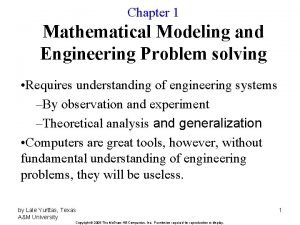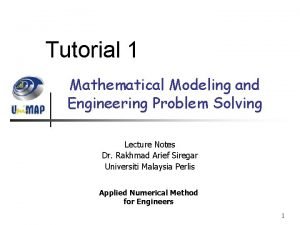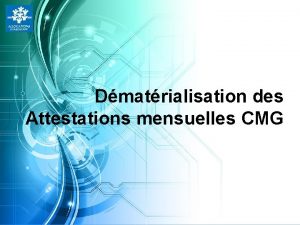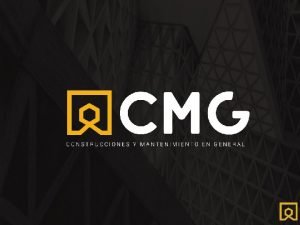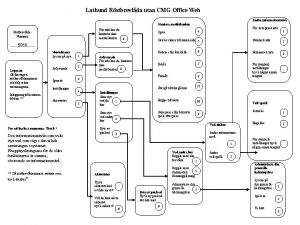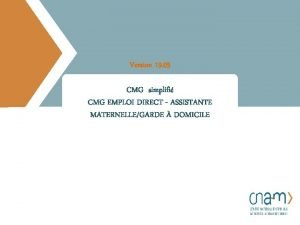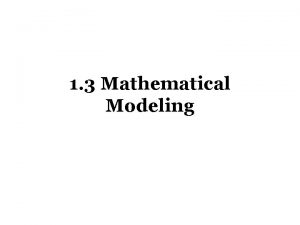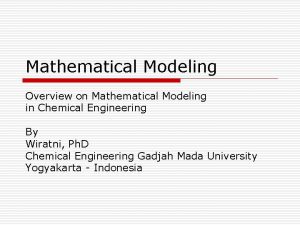CMG Research Mathematical Modeling of the Dynamics of








- Slides: 8

CMG Research: Mathematical Modeling of the Dynamics of Multi-scale Phenomena During Folding and Fracturing of Sedimentary Rocks Ronaldo I. Borja, Craig D. Foster, and Pablo F. Sanz Department of Civil and Environmental Engineering Stanford University

Outline of Presentation Ronnie’s Presentation (40 minutes): • General kinematics of deformation • Constitutive model - plasticity and damage models • Finite element model • Boundary conditions, interface elements Pablo’s Presentation (10 minutes): • Three-invariant plasticity models Craig’s Presentation (10 minutes): • Element enhancements for strain localization analysis

Kinematics of Deformation Features that must be captured: • Folding - change in geometry • Fracturing - large strain at crack tip • Finite rotation of fracture zone Finite deformation formulations: • Lagrangian formulation - appropriate for solids • Eulerian formulation - appropriate for fluids Both formulations can handle geometric nonlinearity, large strain, finite rotation, and frame-invariant constitutive models.

Lagrangian versus Eulerian Formulations Lagrangian: • We follow the motion of a material point • Constitutive model applies to a material point • Finite element mesh could be severely distorted • Re-meshing possible for severely distorted meshes Eulerian: • We describe the motion of a fixed point in space • Point in space occupied by different material points • Finite element mesh will not be distorted ALE (Arbitrary Lagrangian-Eulerian)

Lagrangian Formulation Why this formulation is OK for the CMG project: • Constitutive response applies to a material point • Accommodates coupled plasticity-damage models • We do not expect the mesh to be severely distorted • Captures rotation of fracture as rock folds • Facilitates specification of boundary conditions • Finite element implementation is well developed Finite element implementation: • Integration performed over the undeformed mesh • Constitutive model uses Kirchhoff or Cauchy stress

Illustration of Lagrangian Formulation Graphics 1

Illustration of Lagrangian Formulation

Constitutive Model Features to capture: • Brittle response • Quasi-brittle response • Ductile response • Plasticity • Damage • Localized deformation Framework for continuum model: • Coupled elastoplastic-damage formulation • One unifying model that captures all required features Framework for post-localized model: • Finite element with embedded strong discontinuity
 Helen c. erickson nursing theory
Helen c. erickson nursing theory Relational modeling vs dimensional modeling
Relational modeling vs dimensional modeling Mathematical modelling of mechanical systems examples
Mathematical modelling of mechanical systems examples Mathematical modeling and engineering problem solving
Mathematical modeling and engineering problem solving Mathematical modeling and engineering problem solving
Mathematical modeling and engineering problem solving Elements of mathematical economics
Elements of mathematical economics Attestation mensuelle cmg caf
Attestation mensuelle cmg caf Cmg construcciones y mantenimiento en general sa de cv
Cmg construcciones y mantenimiento en general sa de cv Cmg web
Cmg web



